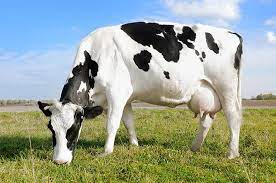
Dairy Cattle Feed: Things You Need To Know Before Raising Cow
In order to increase the production quality and quantity, you as a farmer have to provide high-quality feed. Dairy cattle require a balanced diet, including energy, protein, vitamins, and minerals in their feed to produce a lot of milk. Also, you need to give them plenty of clean and fresh water to keep them hydrated.
Being involved in the husbandry business, you need to know what and what not to include in the daily cattle feed.
Include Dry Feed to Dairy Cattle Diet
Increasing dry forages in dairy cattle is the best way to measure the success of dairy nutrition. When dry feed is included in dairy cattle, there is a high probability that they will produce more milk. High-quality dry feed is associated with high milk yield.
If you want to increase milk yield in the cow, make sure you add a dry feed to their diet. Give your cow 1 kg dry matter a day, and the milk production will multiply. This means you will more milk than you regularly get.
However, you need to examine your cow to know how much daily feed they required. Every cattle has different nutrient requirements. The quality of feed you provide to one dairy cow may not be the same as another.
So get a vet for a check-up. Take the suggestion from the vet regarding the nutrition and feed for each cow you have. And accordingly, you can provide the feed to cattle.
There are certain points you need to know before you feed daily cattle.
1. High-quality forages
The gut health of t the cattle depends on the quality of forages. Thus, to increase the nutritional intake, you need to add those feed which fulfills nutrition requirement. As you can’t freely give grain to the dairy cattle as it can lead to metabolic disorder. So the best way to balance nutrition in the cattle is with forage intake.
Corn Silage
Corn silage is ideal for dairy cattle. Usually, corn silage occupies 25-35% of dry matter. It is high in fiber but low in other nutrients. So you can mix corn silage in the feed to increase milk production. Corn silage provides more feeding value than other forages, which is why you need to include it in the daily diet of dairy cattle.
Sudangrass
Sudangrass is another best choice to include in cattle feed. They are great for planting in early summer. When managed properly, they can provide excellent nutrient value. You need to ensure that cattle graze sudangrass less than 18 inches in height and should not be grazed after frost or severe drought. The best feature of sudangrass is that they are more drought-tolerant than corn.
Mixture of summer-annual grasses and legumes
Legumes such as beans and peas are easily available in the market. You can get soybeans or peas and mix them with summer-annual grasses and provide them to cattle. Legumes are high in protein so, dairy cattle with low protein should be provided with this feed. Instead of buying legumes, you can also choose to grow them. However, you need to grow them again and again as they won’t harvest once cut.
2. Metabolic disorder
Metabolic disorders in cattle include ketosis, milk fever, fat cow syndrome, and hypomagnesemia. If you notice any of these disorders, you can correct them by taking your dairy cattle to the vet and make some changes in their feed.
You can know whether the cow is suffering from metabolic disorders by observing them. If the cow has a metabolic disorder, they will respond to feed intake, in the same way, the sick cattle respond. You can take suggestions from the vet to improve the feed intake of the cattle. Making some changes in the feed can help overcome the metabolic disorder.
3. Limit Fat in Newly Born Cow
Dairy cattle should provide a moderate amount of fat. When young cattle are fed too much fat, feed intake can fluctuate. Cow mobilizes body fat to sustain milk production. The mobilized fat increases the circulation of non-esterified fatty acids.
When the fat ratio increases in the cattle, the young dairy cows will eat less feed as they stop body fat mobilization. When a young cow eats less, it will lead to nutrient imbalance and can cause diseases.
4. Use Additives
If the hay and forages are not working for the dairy cattle, you can provide them with additives. To know whether your cattle need an addition or not, you need to regularly do their health check-up. You can provide additives according to the vet’s suggestion.
You can find many types of additives on the market. Some might be high in protein, and some may be high in minerals and vitamins. You need to give additives to dairy cattle by mixing in feed. And once dairy cattle get used to it, you can give additives without mixing.
5. Dairy Meal
A dairy meal is a mixture of energy, protein, and minerals to meet the requirement of cattle. When dairy cattle are provided with this feed, they produce quality milk. Also, dairy meal plays a role in keeping cattle healthy.
If the cattle are lacking nutrients, you can provide them with a dairy meal. The dairy meal doesn’t just improve milk quality but also increases the quantity of milk production.
Conclusion
Quality feed is most important in dairy cattle as it determines the health of the cattle. When the cattle are healthy, they become more productive. So, if you want to grow and establish your business by selling milk, you surely don’t want to compromise on the feed quality.
Also, Dairy cattle require a lot of water as milk uses water. You need to give dairy cattle plenty every day. And make sure to clean the trough every three days to stop the disease from spreading.
